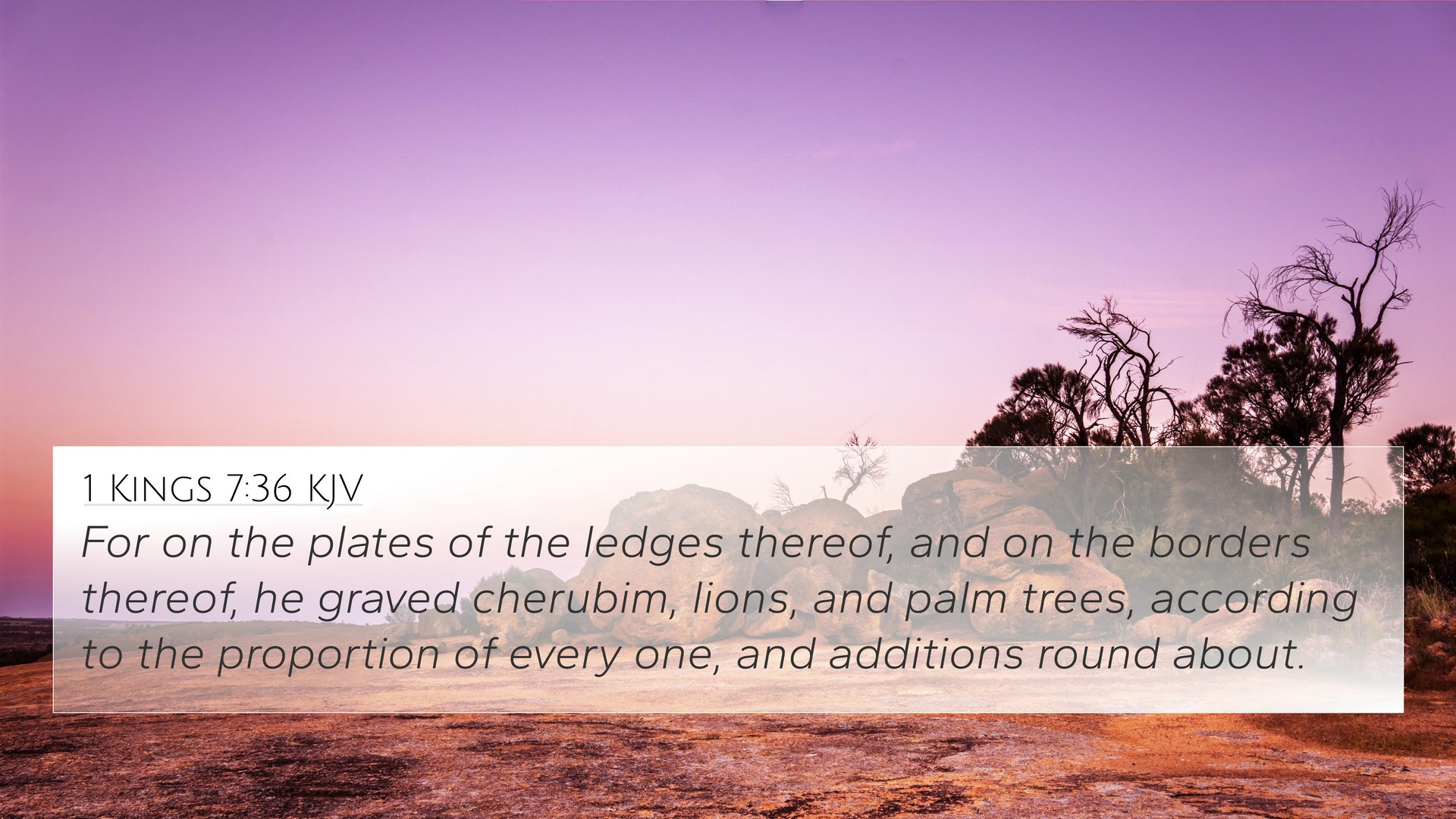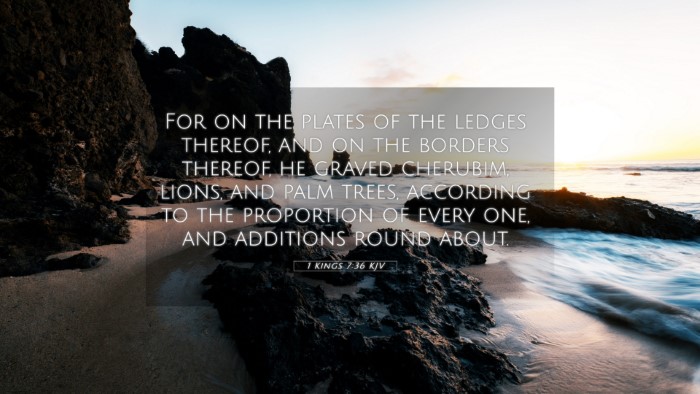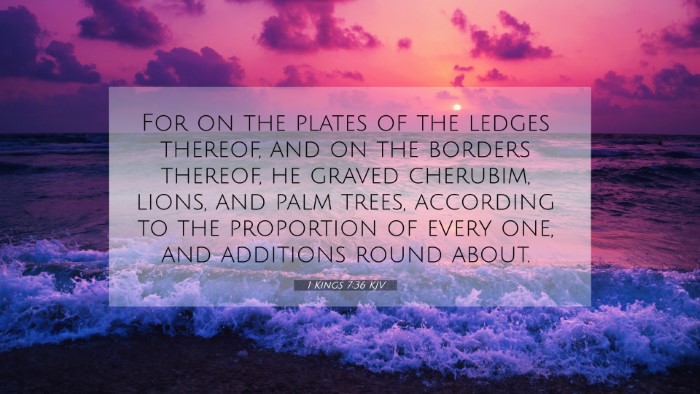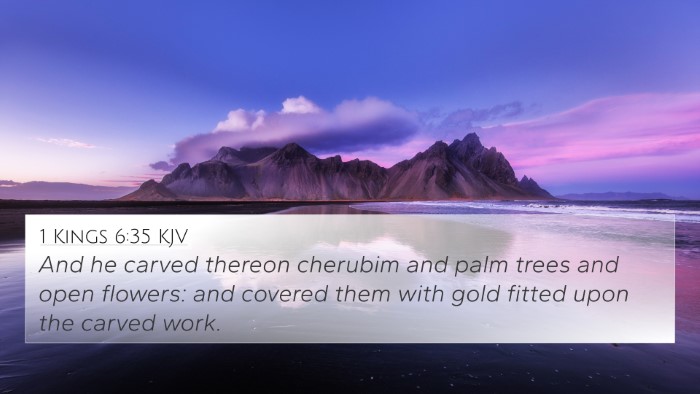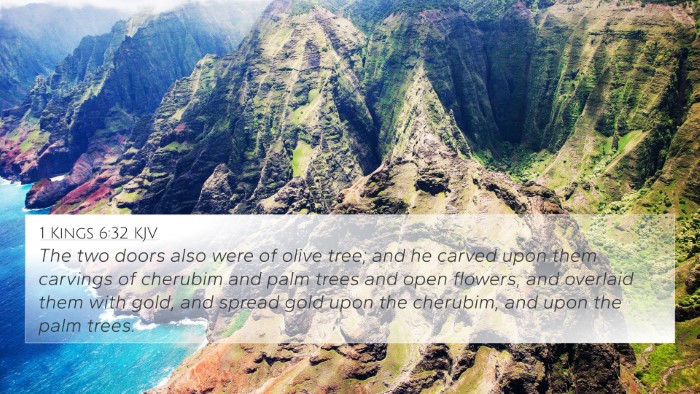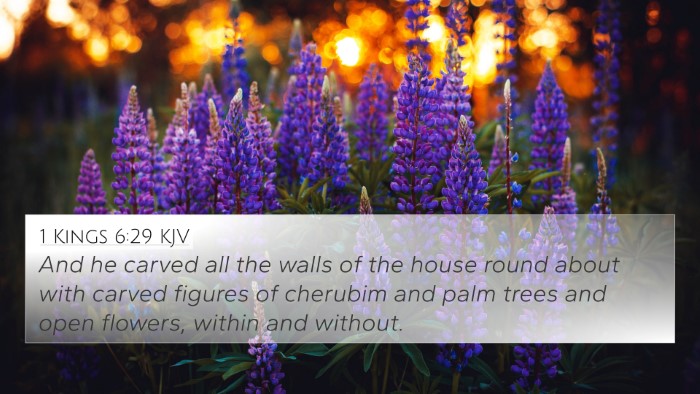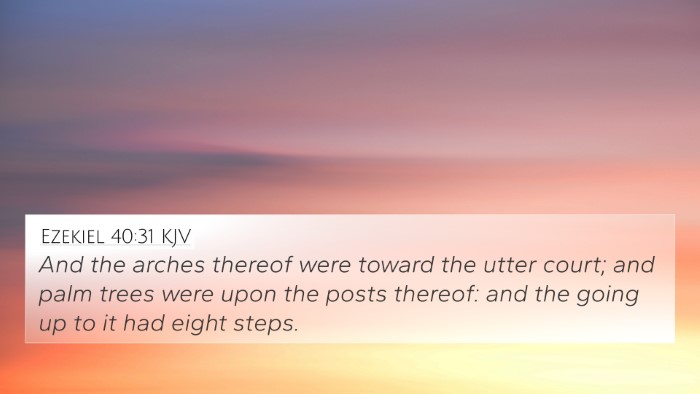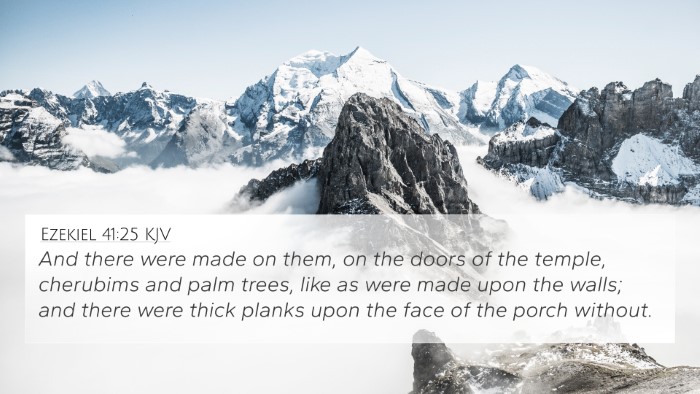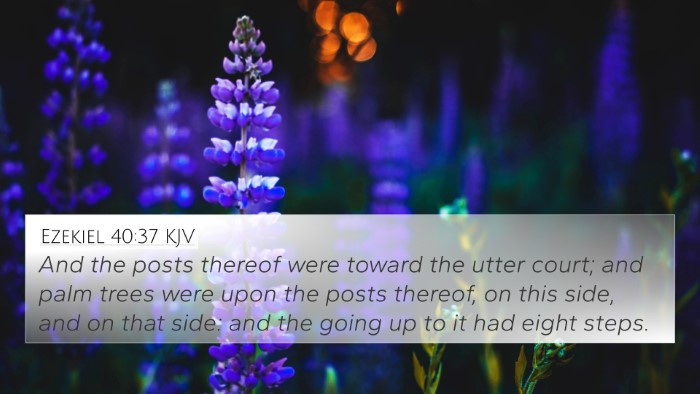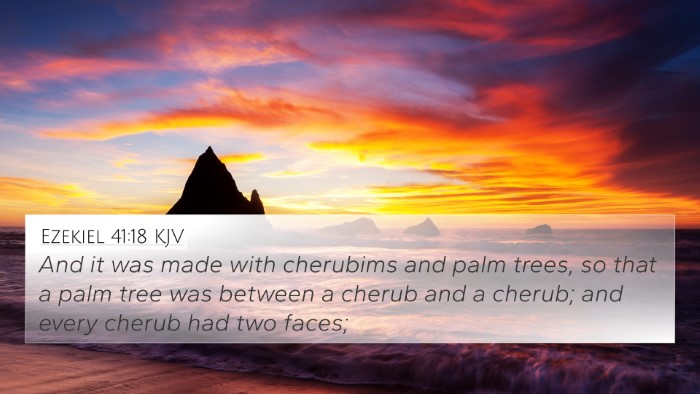Understanding 1 Kings 7:36
1 Kings 7:36 states, "And on the plates of the pillars was a pattern of pomegranates, and above was a lily-work. Thus was the work of the pillars finished." This verse describes the ornate decorations on the pillars of Solomon's temple, emphasizing both their beauty and the intricate craftsmanship involved in their construction.
Summary of Meaning
This verse not only showcases the architectural splendor of the temple but also serves as a representation of God’s glory. The pomegranates and lily motifs symbolize abundance and purity, respectively.
Insights from Public Domain Commentaries
-
Matthew Henry:
Henry emphasizes the significance of the artistic details in the temple, reflecting the holiness and magnificence of God. He interprets the pomegranates as symbols of fruitfulness and the lilies representing purity and beauty in worship.
-
Albert Barnes:
Barnes notes the craftsmanship involved in the design and installation of the pillars, highlighting the importance of having spaces that reflect divine beauty. The pomegranates as decorative elements serve to connect nature to the sacredness of the temple.
-
Adam Clarke:
Clarke presents a detailed analysis of the ornamental aspects, mentioning that the pomegranates signify wealth, and he ties the floral motifs to other biblical references that similarly depict beauty and grace in God’s creations.
Bible Verse Cross-References
To further understand the themes of 1 Kings 7:36, it is insightful to explore these related passages:
- Exodus 28:33-34 - Discusses the design of the priestly garments, which include pomegranates as an ornamental motif.
- 2 Chronicles 3:5-6 - Provides additional details regarding the construction of the temple, noting the richness of materials used.
- Song of Solomon 4:13-15 - Contains references to fruits and flowers, paralleling the spiritual themes at play in the temple’s design.
- Psalms 92:12-14 - Speaks of the righteous flourishing like palm trees, linking back to the natural imagery found in the temple.
- Isaiah 61:3 - Describes God’s ministry of comfort, drawing from metaphors associated with beauty and restoration.
- Matthew 6:28-29 - Jesus references the beauty of the lilies in the field, connecting back to the symbol of the lily in the temple.
- Revelation 21:2 - The new Jerusalem is described as adorned like a bride, paralleling the exquisite adornment of the temple.
Connections and Themes
The intricate designs in 1 Kings 7:36 offer rich themes of glory, holiness, and divine beauty. The use of plants symbolizes both God’s creative power and His relationship with His people. Each ornate detail serves not only an aesthetic purpose but also a spiritual one, drawing deeper connections through cross-referencing Bible verses.
Tools for Bible Cross-Referencing
- Bible Concordance: A tool to explore words and their occurrences across various scriptures.
- Bible Cross-Reference Guide: Provides systematic cross-referencing for scripture study.
- Comprehensive Bible Cross-Reference Materials: Collections that compile verses with thematic or narrative links.
Exploring Thematic Connections
As we engage in cross-referencing Biblical texts, identifying connections between Old and New Testament verses reveals a fuller understanding of scripture. For example, the themes of beauty and divine design are prevalent throughout scripture, as seen in the artistic descriptions of both the temple and the natural world.
Conclusion
1 Kings 7:36 encapsulates the essence of divine artistry as expressed in the temple's structure. By studying this verse in conjunction with related passages, we can gain insights into the beauty of God’s creation and the significance of worshipful spaces. Understanding these connections enhances our spiritual walk and offers a richer experience of biblical truths.
